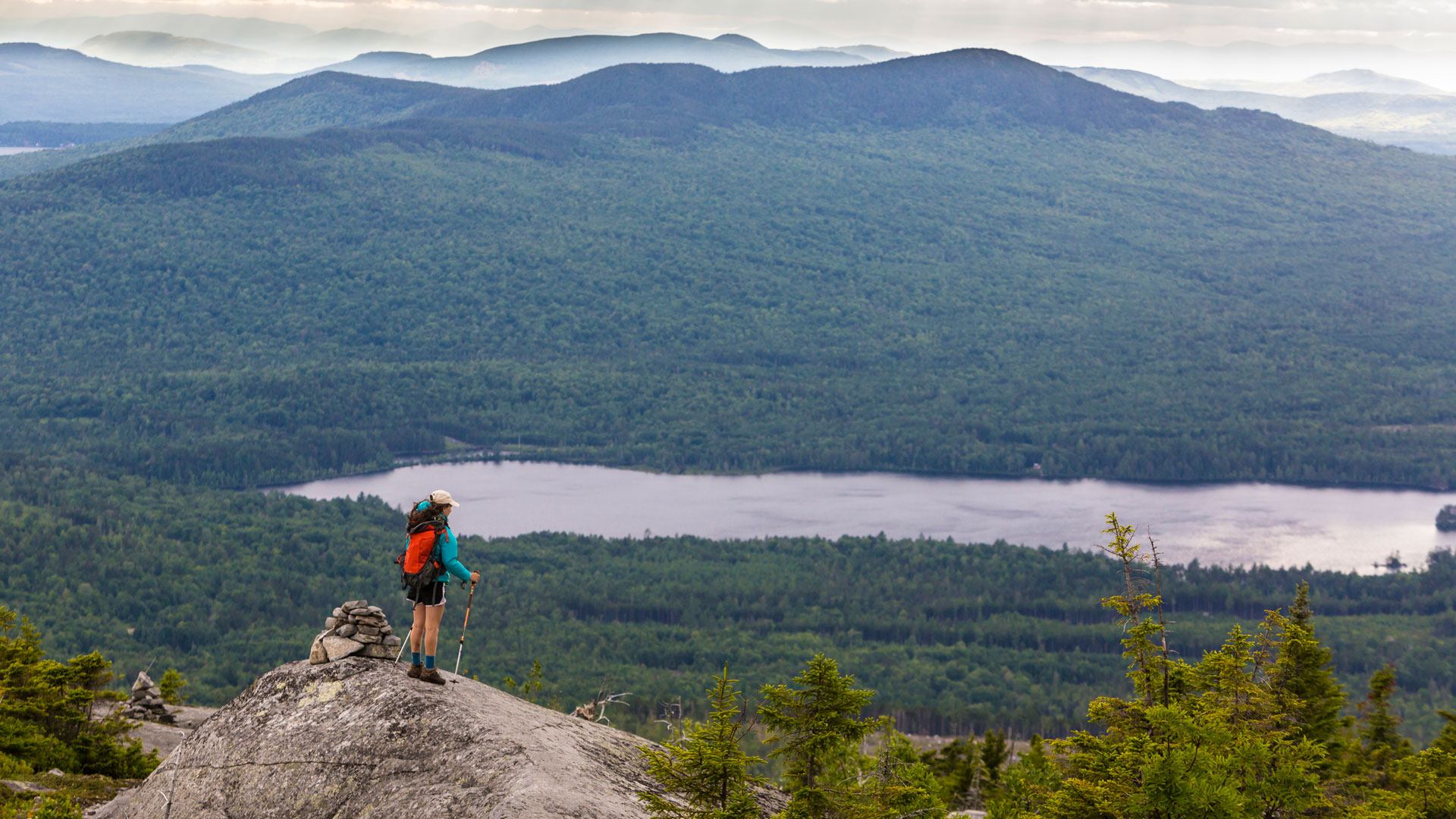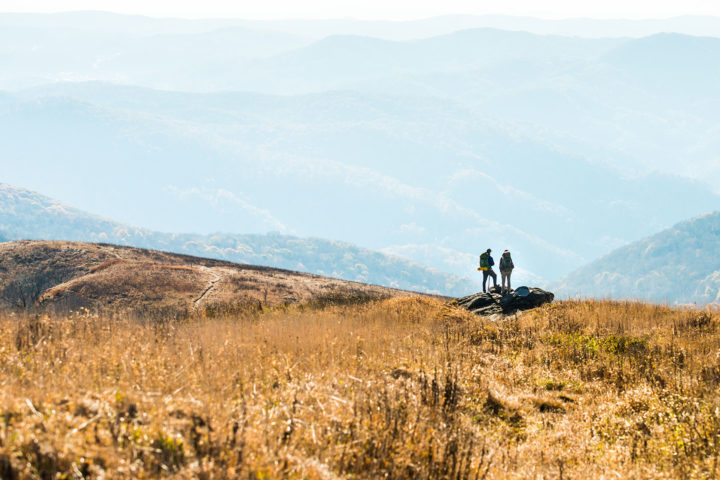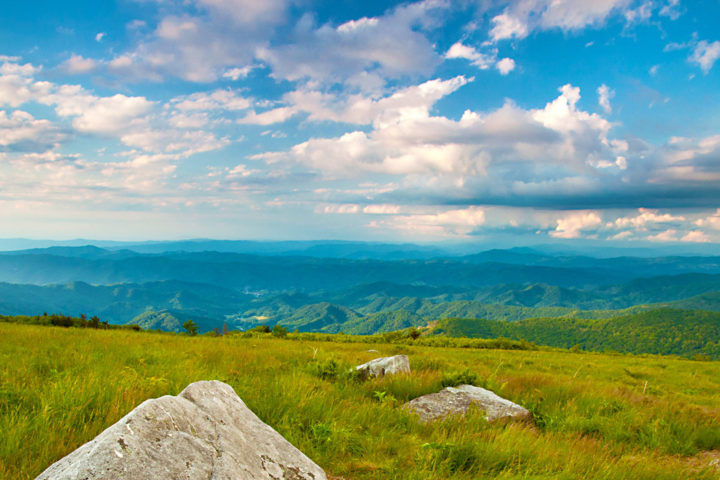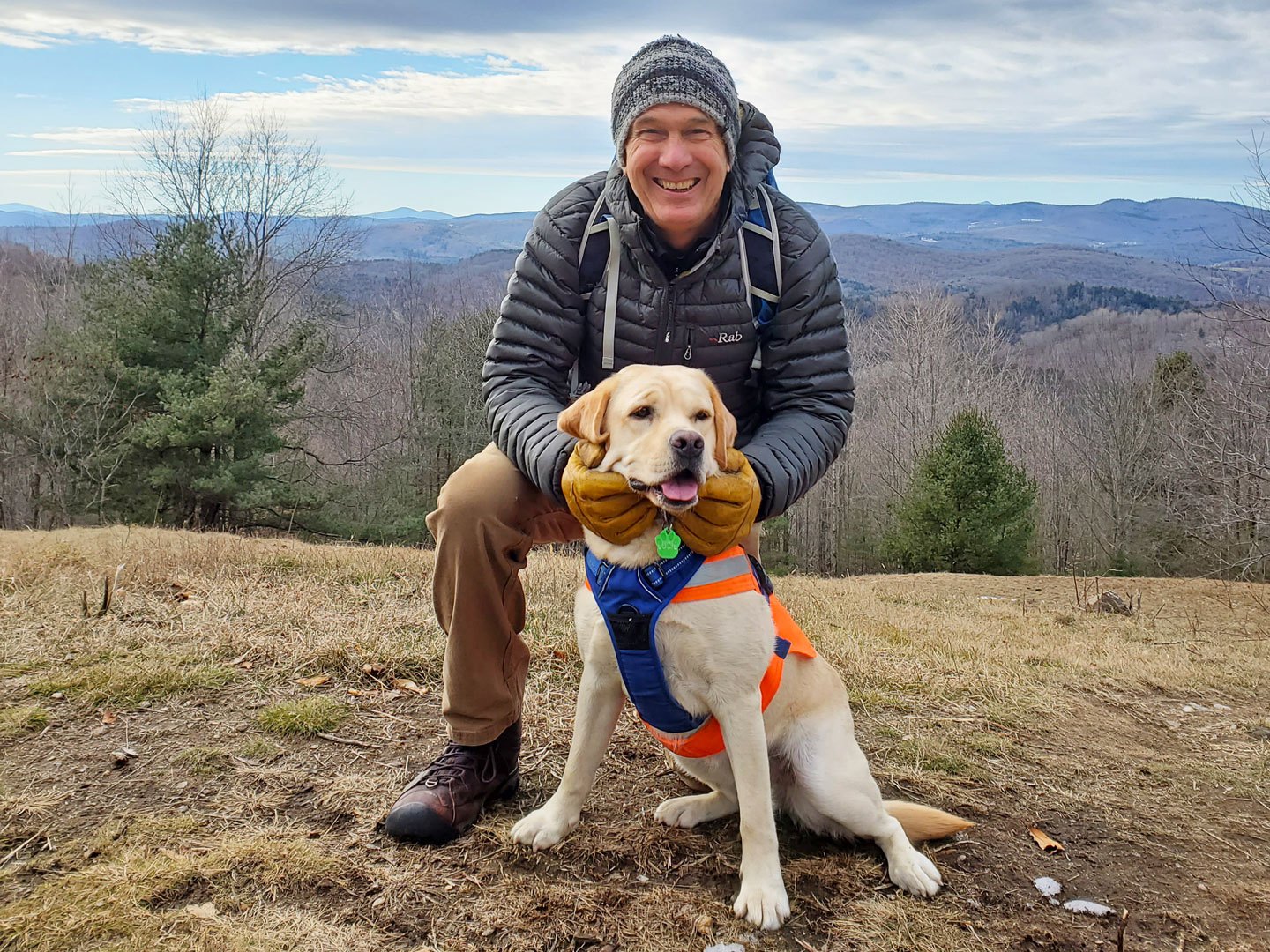By Dennis Shaffer, Director of Landscape Conservation
An Eye on the Horizon: A Reflection
December 22, 2021
My 35-plus years of work at the crossroads of land conservation and outdoor recreation will be sunsetting at the end of this year. I have had the good fortune and honor of spending the last seven years serving as the Appalachian Trail Conservancy’s (ATC) Director of Landscape Conservation and lead staff person for the Appalachian Trail Landscape Partnership (ATLP). While I am looking forward to retirement and the new adventures that lie ahead, I am also very excited about the conservation work that continues to gain momentum across the Appalachian Trail (A.T.) landscape and beyond.
The ATLP began back in 2015 when the ATC, in partnership with the National Park Service, convened a group of conservation leaders from across the A.T. landscape to explore the coalition-building opportunities around this landscape that bridges so many critical conservation values. As I reflect on our collaborative efforts since then, it is easy to see that we experienced many of the accomplishments and challenges that are characteristic of most large-scale landscape conservation efforts that are happening across North America and around the world. We have generated enthusiasm and connectivity among our partners working from Georgia to Maine. We have discussed and debated over the boundaries of the A.T. landscape, priority target areas, Partnership mission and vision, and the appropriate roles and responsibilities for a coalition operating at such a grand scale. Yet just like our peers around the globe, we strive for the most effective methods and tools to advance and accelerate the pace of successful land conservation across such an enormous landscape.
From where I sit, I see the ATLP at an important and monumental transitional stage. Our journey really began back in 1921 when Benton MacKaye shared his vision of an intact and connected Appalachian Mountain Range with the A.T. as its spine. It is almost unimaginable to me that one individual could be so creative and bold to conceptualize such a grand idea. The immensity of his dream still holds true today. Over the last 100 years, the A.T. was constructed and millions of acres have been conserved, providing the foundation for MacKaye’s grand vision.
The next 100 years will require the same creativity and boldness that MacKaye shared with us in 1921. Through the challenges of climate change, loss of critical habitat, and the skyrocketing demands for public access to outdoor recreation across all communities and populations, we are seeing just how important the Appalachian Mountain Range is to our future. We now know that successful climate change mitigation and adaptation will require the protection and connectivity of resilient lands across a much greater landscape than the current focus of our partners within the ATLP. We also know that we cannot be successful without engaging and connecting communities and constituencies that live in and/or recreate across this region. Efforts must continue to build partnerships beyond the alliances that we have formed thus far. We will only be successful if we have a diverse coalition that roots its work in fairness, equity, and justice for all of our constituencies.

The Appalachian Trail Landscape Partnership (ATLP) has helped coordinate the protection of thousands of acres of landscapes essential for recreational, scenic, and conservation values, including Bald Mountain Pond in Maine. Photo courtesy of The Trust for Public Land.
Building the momentum and support for a great eastern landscape has taken 100 years thus far, and the further protection of which will likely occupy us throughout the A.T.’s second century. But we cannot linger. Many stars are aligning that will contribute to our success going forward: permanent funding of the Land and Water Conservation Fund with at least $900 million allocated per year; the globally popular 30×30 movement and the Biden-Harris Administration’s America the Beautiful initiative; the upcoming Farm Bill reauthorization; and more. We have an opportunity as a Partnership to think big, be bold, and get creative.
One of the most rewarding aspects of my work with the ATLP over the last seven years has been engaging in the enthusiasm and commitment our partners bring to the Partnership. I was often challenged to figure out how to harness that enthusiasm and turn it into conservation success stories. For example, seeing partners in Maine recognize the connections of their work to their peers in the Southern Appalachians was, and continues to be, very powerful. I have no doubt that debates will continue over boundaries, roles and responsibilities, and governance structures. But our fundamental beliefs in the conservation values of this great eastern landscape must bring us together. Large landscape conservation practitioners often look to the Yellowstone to Yukon Conservation Initiative as the “gold standard” of large-scale efforts. The time is ripe for the Appalachian Mountains and the A.T. landscape to be elevated to a comparable status. The Appalachian Mountain Range, its communities, and vast ecological values should be as iconic in their recognition as the A.T. itself. This is a landscape that connects humans and nature like no other.
Getting us ever closer to the dream of visionary Benton MacKaye will require more partners, more resources, and even great public recognition and support. Each of our respective organizations has a critical role to play. With big thinking and bold action, we are poised to move into the next century of conserving a great eastern landscape for the benefit of generations into the future.
I will be cheering you all from the sidelines!
-Dennis
Discover More

Official Blog
Partnering for A.T. Landscape Protection
A massive amount of collaboration and shared dedication is required to ensure A.T. landscapes are conserved.

Official Blog
An A.T. Realm Beyond Recreation
Recreation is only one part of a broader Appalachian Trail conservation effort, which extends well beyond the footpath itself.

A Strong Future
Conservation
As stewards of the Appalachian Trail, our goal is to ensure it will be enjoyed for centuries to come.


